Advocating a comprehensive strategy—innovative recruitment, education investments, expanded roles, retention efforts, and policy changes—to address the healthcare workforce shortage.
The healthcare industry, a cornerstone of societal well-being, is facing an acute challenge—the shortage of healthcare workers. As the demand for healthcare services escalates, the critical need for qualified professionals becomes more pronounced. This article explores the multifaceted dimensions of the healthcare workforce shortage and strategies for addressing this pressing issue.
1. Understanding the Scope of the Shortage
The shortage of healthcare workers spans various professions, from nurses and physicians to allied health professionals. Demographic shifts, an aging population, and the increasing complexity of healthcare needs contribute to the widening gap between demand and supply. Acknowledging the depth and breadth of the shortage is the first step in formulating effective solutions.
2. Recruitment Innovation and Marketing Strategies
In the face of a competitive job market, healthcare organizations are reevaluating their recruitment strategies. Innovative approaches, such as targeted marketing campaigns, leveraging social media, and showcasing organizational culture, play a pivotal role in attracting potential candidates. Highlighting the unique aspects of working in the healthcare field can make positions more appealing to prospective hires.
3. Investing in Education and Training Programs
Addressing the shortage requires a long-term vision that includes investing in education and training programs. Collaborations between healthcare organizations and educational institutions can help create pipelines for skilled professionals. Offering scholarships, tuition reimbursement, and mentorship programs can incentivize individuals to pursue careers in healthcare and support current workers in advancing their skills.
4. Expanding Scope of Practice and Telehealth
To maximize the impact of the existing healthcare workforce, organizations are exploring ways to expand the scope of practice for various professionals. Nurse practitioners, physician assistants, and other allied health professionals can play a more significant role in delivering primary care. Additionally, the integration of telehealth allows healthcare workers to reach patients in remote areas, addressing gaps in access to care.
5. Prioritizing Retention and Well-being
While recruitment efforts are crucial, retaining existing healthcare workers is equally vital. Addressing burnout, providing professional development opportunities, and prioritizing employee well-being contribute to a positive workplace culture. A satisfied and engaged workforce is more likely to stay, reducing turnover and mitigating the impact of the shortage.
6. Advocating for Policy Changes
Advocating for policy changes at local, state, and national levels is essential for overcoming systemic barriers contributing to the shortage. Policies that support healthcare education funding, streamline licensure processes, and address regulatory challenges can create a more favorable environment for healthcare workforce development.
To sum up, the shortage of healthcare workers is a complex challenge that demands a comprehensive and collaborative approach. By combining innovative recruitment strategies, investing in education and training, expanding the scope of practice, prioritizing retention efforts, and advocating for supportive policies, the healthcare industry can pave the way for a more resilient and sustainable workforce. In addressing this shortage head-on, we not only fortify the foundation of healthcare but also ensure the well-being of communities for generations to come.
Strategies to Address Healthcare Workforce Shortage
1.Clinician Support and Retention: Emphasize reconnecting clinicians with their purpose and provide necessary support and training to enhance retention.
2.Specialty Shortages Focus: Address specific shortages, with projections indicating a need for over 87,000 addiction counselors and 68,020 primary care physicians by 2036.
3.Nursing Shortages: More than 200,000 new RNs are needed annually in the U.S. to meet healthcare demands and replace retiring nurses.
4.Nursing Education Faculty Shortages: Over 80,000 qualified nursing applicants were turned away in 2019 due to insufficient faculty and resources.
5.Regulation of Nurse Staffing Agencies: Address exploitative pricing practices by nurse staffing agencies during high-demand periods.
6.Visa Relief for Foreign Healthcare Workers: Support legislative measures like the Healthcare Workforce Resilience Act for expedited visa processing for international healthcare professionals.
7.Legislative and Funding Support: Seek national and legislative support for healthcare workforce development, including funding for educational and training programs.
These strategies represent a combined approach to tackle the healthcare workforce shortage, focusing on both immediate needs and long-term sustainability.
References
- American Hospital Association (AHA). "AHA Releases 2023 Health Care Workforce Scan." Available at: AHA
- Bureau of Health Workforce. "Projecting Health Workforce Supply and Demand." Available at: Bureau of Health Workforce
- American Hospital Association (AHA). "Fact Sheet: Strengthening the Health Care Workforce." Available at: AHA





